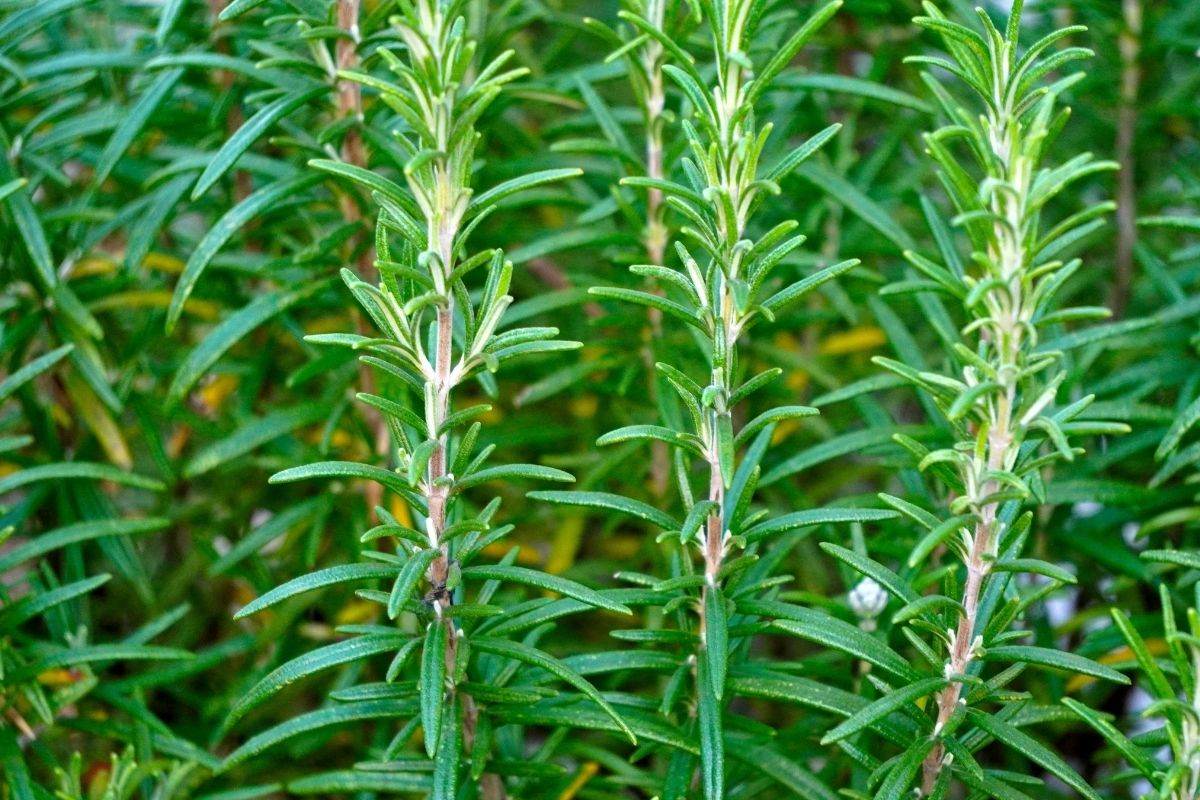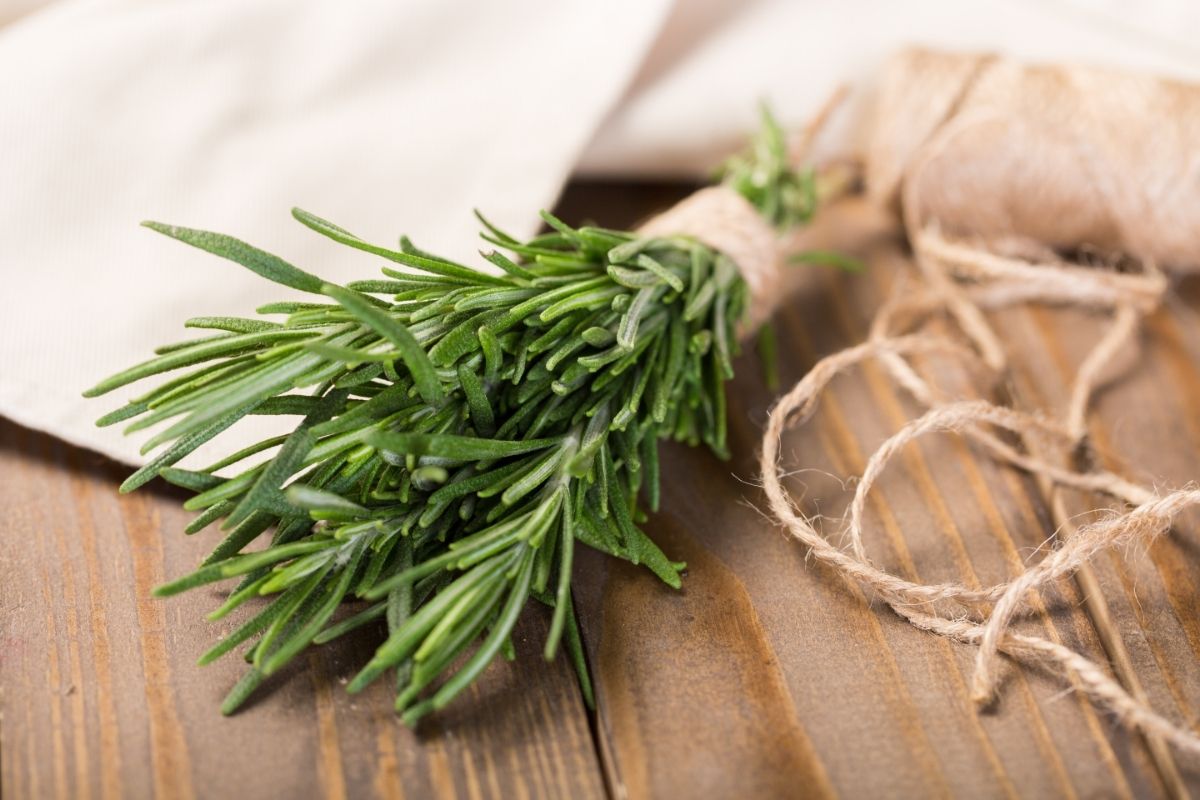Propagate Rosemary (Salvia Rosmarinus) is a perennial herb native to the Mediterranean region, but it is now naturalized throughout Europe.
It has become very popular because of its culinary uses. The leaves of rosemary are widely used in cooking and also as a natural remedy for colds and flu.
Rosemary is a lovely herb that adds beauty to your garden. Rosemary grows easily from seeds or cuttings. It is especially easy to propagate from cuttings.
Propagation is the process of growing plants from seeds or cuttings. Rosemary is an easy plant to grow because it doesn’t need much water or fertilizer.
In order to propagate rosemary, you should take cuttings from mature plants. This will ensure that they are coming from plants that have a high success rate in terms of their growth.

How To Propagate Rosemary:
STEP 1: Select A Few Stems From The Mature Plant
Rosemary plants can be grown in pots or planted directly into the soil. Some varieties grow upright while other types grow sideways. Some types of rosemary can be cut back to encourage new growth.
Soft, flexible stems indicate that the plant is ready for propagation, and cuttings should be taken from stems that are at least 1/4” in diameter.
You start the process by taking a cutting from the parent plant, which should be a healthy stem.
STEP 2: Use Pruners Or Sharp Scissors To Cut The Stem (Just Below A Leaf Node).
There are several ways to cut stems. One method of doing this is to use a pair of pruning shears or sharp scissors to clip off a 4- to 6-inch section from the top.
You should always make sure to clean whichever type of shears you use to cut the rosemary before you start this process! The rosemary plant is going to be in a vulnerable state, and you don’t want to risk infecting it with dirty scissors.
If you don’t wish to do this method, you can cut a long stem and trim it down to smaller pieces. These smaller sections can then be planted to grow more plants.
Important: Keep note of which end of the cutting was lower down on its original stem. This is where you need to plant it. Don’t plant them upside down.
STEP 3: Remove The Lower Leaves And Place Cuttings In A Pot With Soil. Keep Them Moist To Stimulate Roots.
Remove the lower leaves of the plant, leaving about five or six upper leaves.
Cuttings can grow roots all on their own. However, if you want to start the process more effectively, use rooting hormone powder.
Dip the ends of the cuttings into the powder and then carefully place them inside the pot. Make sure there is enough space between cuttings, so they don’t get tangled up.
Cuttings should be placed around the outer edges of pots or containers. This allows them to dry out more easily.
Rosemary plants need good drainage. They also need regular watering. Keep the soil moist to the point of touching, but do not overwater.
Watering pots requires care and attention. Make sure to set up your greenhouse correctly before planting. Use a humidity dome or plastic bag to retain moisture and humidity inside the greenhouse.
Keep the soil evenly moist but not saturated. Roots should start growing after about two weeks. Check for growth every week until the plants reach the desired size.
STEP 4: Once Roots Are Established Separate New Rosemary Plants Into Individual Pots.
New plants need sunlight and water.
They should be kept in a place where they receive 6-8 hours of direct sunlight each day and stay moist, but not too wet. When new growth starts to form, gently pull the plants out of the soil.
At this point, you can either place them into a larger pot or directly into the ground.
You should continue to water your plants regularly until they start growing again. This involves a process called hardening off.
Hardening off means exposing plants to outdoor conditions before planting them in your garden.
You can do this by setting them out in a sheltered location for a few hours on the first day, then gradually increasing the amount of time spent outdoors over the course of a few weeks.
Related: https://naturallist1.wpengine.com/how-to-prune-rosemary/
STEP 5: Keep An Eye On Your Rosemary Plant.
Watering your plants is important. You need to make sure you’re watering them properly. You also need to be careful when you’re doing this because if you overdo it, then you’ll kill your plant.
You also want to make sure that your plants are getting enough sunlight. If you do these things, then you’ll be able to grow healthy plants.
Layering
Rosemary propagates very well this way. It grows quickly and produces many flowers.
It doesn’t need much water. You should dig a hole about 2-3 feet deep and 3-4 feet wide. Then you should put the rosemary in the hole and cover it up with dirt.
A sharp sterile knife should be used to cut off the leaves and bark from underneath the stem. Then the stem should be pinned to the ground using a garden staple. Fill the trench with soil.
Water your plants regularly until you see new growth at the tips of the stems. Digging around the base of the plant can help you find new roots. This method takes time, but it works!
Starting From Seed
Rosemary is a hardy perennial shrub that grows well in most climates. It is used as both a culinary herb and a medicinal herb.
Rosemary plants take about 6 months to propagate from seeds. You should soak the seeds overnight in warm water before you start the growing process.
Place your seeds in a pot containing a good amount of soil. You should plant seeds in flats or 2-4 inch pots to get the most effective results.
Lightly cover the seeds with soil, and then top them off with a plastic lid or humidity dome. The germination rate is usually low, so plant extra seeds!
Place the seeds out of direct light in a room that maintains a consistent temperature of around 55-65 degrees Fahrenheit.
If you have one, a heat mat set at 65-70 degrees Fahrenheit can really help things along. You should mist the seeds lightly to keep the medium wet until germination.
In the best-case scenario, germination should happen in 2-4 weeks, but it could also be much longer so don’t panic if it takes a while.
As soon as the seeds have sprouted, remove the plastic lid and relocate them to a location that has bright light. Keep the surface of the medium wet by misting it with a spray bottle.
Or, if you’re growing indoors, place your plants in a shallow tray filled with water.
Seedlings should be planted when the soil temperature is above 50 degrees Fahrenheit. You can plant them into individual pots or directly into the ground.
To Sum Up…

The easiest way to propagate rosemary is by taking cuttings, and it only takes a few simple steps.
However, if you don’t wish to use this method, you can also propagate rosemary using the layering method (planting a mature plant under the soil and promoting new growth on top of it), or you can start the process from their seed stage.
While this will take much longer, it still produces very healthy rosemary plants.
Frequently Asked Questions:
What kind of soil do I need to grow my rosemary?
You can grow rosemary in any type of soil – they can even tolerate fairly poor soils. However, they do prefer to grow in rich, fertile soils.
Just make sure that there’s enough moisture in the soil, and the rosemary plant should grow well!
How long does it take to grow rosemary?
It takes approximately six months to get a fully grown rosemary plant. But, if you want to speed up the process, then you can use a rooting hormone that stimulates the growth of the rosemary plant.







